12 Types of Tile, Explained by Experts
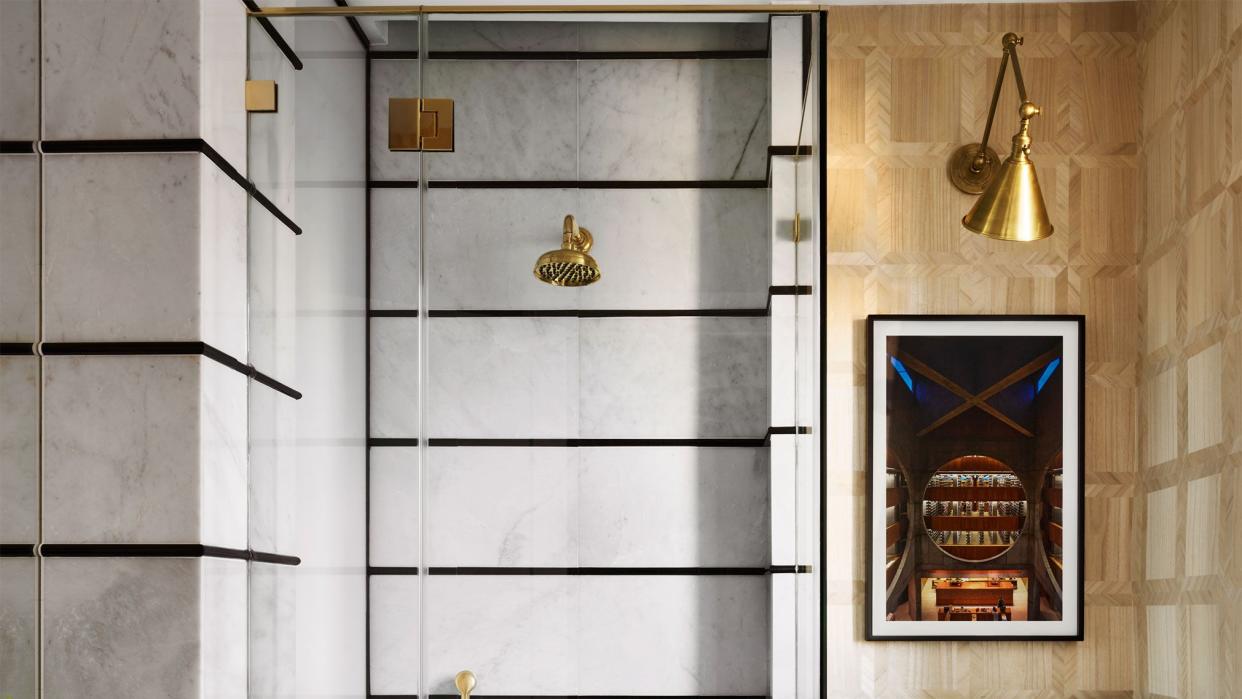
It’s finally time to update your outdated kitchen and bid adieu to that sad, yellowed laminate flooring. But before you order a truckload of mosaic tiles in bulk on an impulse buy inspired by Kelly Wearstler’s latest project, consider your options. Whether you’re drawn to the classic elegance of natural stone, the modern appeal of glass, or the practicality of ceramic, the possibilities for your flooring or walls are limitless. In fact, there’s a whole slew of artisan products transforming the market and pushing the boundaries on how a surface can look and feel.
Aesthetics aside, there are also logistical considerations. Maybe your kitchen backsplash must withstand the slightly obsessive weekend food experiments conducted by a messy foodie tenant. Perhaps, like designer Victoria Sass’s client with a lakeside bathroom, the impending wear and tear of rambunctious youngsters will necessitate titanium-strength flooring. Or maybe—wear and tear considerations aside—you’re going for a tile moment that supersedes any wall art that might me hung, like Montana Labelle’s Brutalist-inspired kitchen wall.
Whether this is your first home refresh or you’re simply looking to switch things up, we can help: We’ve tapped three tile experts to weigh in on budget concerns, style considerations, and the things you didn’t know that you didn’t know. Read on for a comprehensive look at the 12 basic types of tile—and soon enough, you’ll be executing the space of your dreams with complete confidence. Happy tiling!
Ceramic
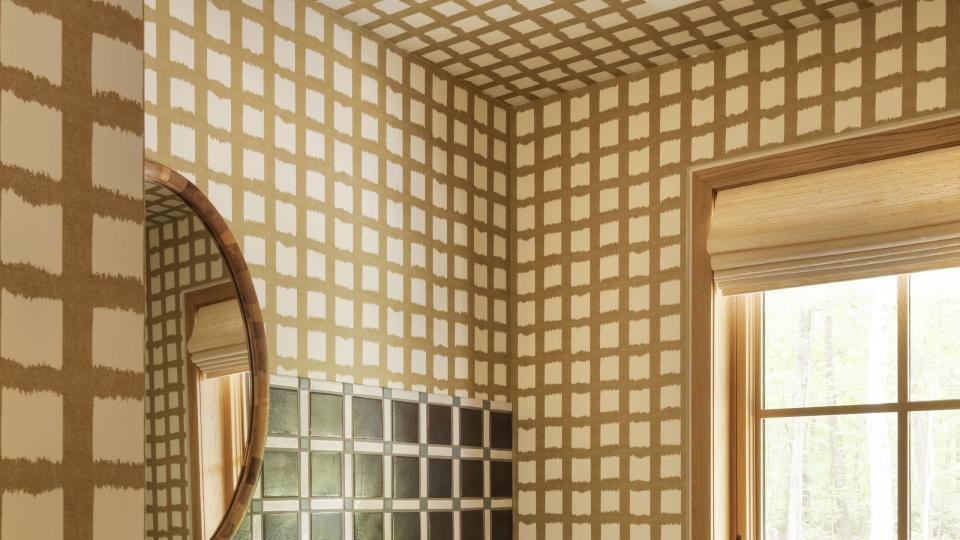
Ceramic tile is a very popular choice in many homes. “Ceramic tile is celebrated for its ability to offer richly colored and varied glazes, ranging from glossy to matte, and incorporating texture and painterly moments as well,” explains Roy Marcus, with the family-owned Artistic Tile. The tile is created by a technique that sees clay fired, then glazed, then fired again. The American “art ceramic” movement of the 19th and early 20th centuries has inspired today’s U.S.-based ceramic makers, especially those working at the custom level for luxury clients, according to Marcus.
Zellige ceramics imported from Morocco (more on those below) are notably popular, Marcus says, “especially when used with panache in luxury residences, where color-blocking and patterning take advantage of their subtle color.” Generally, ceramic tile holds up well so can be used in high traffic areas like laundry rooms, bathrooms, or kitchens.
Porcelain
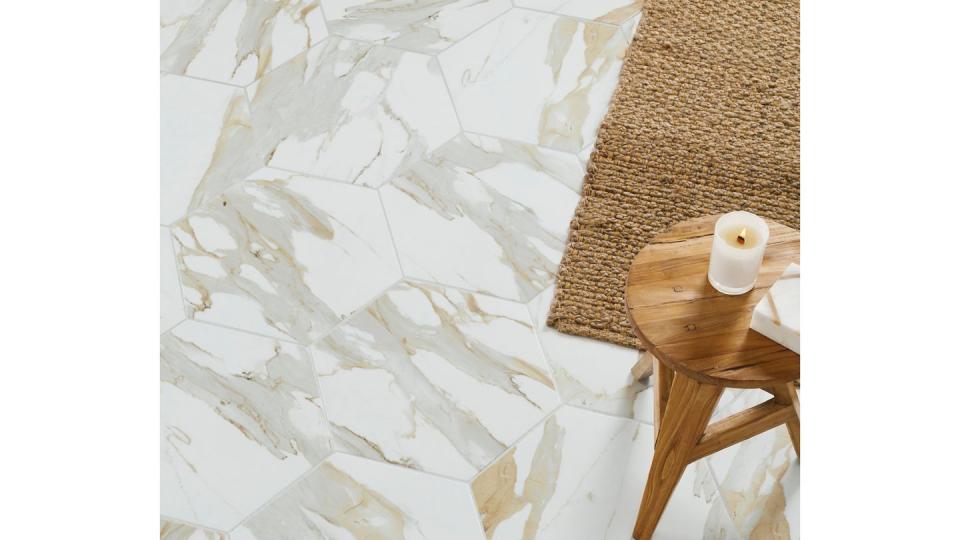
Known for its versatility and durability, porcelain is a popular type of tile for many homes. It’s perfect for those who want stylish designs with easy care. “There’s much to appreciate about porcelain tile, but the amazing variety in a single material might be what we love most of all,” says Kirsty Froelich, director of design at the Tile Shop. “This man-made material comes in just about any shape you can dream up.” This flexibility makes for endless possibilities, from interesting shapes like hexagons and arabesques to classic choices like rectangles and penny rounds. “Porcelain tiles are available in virtually every color of the rainbow too,” Froelich adds.
For those who aren’t looking to break the bank anytime soon, porcelain is a great imitator. “From wood-look porcelain tile to realistic marble-look tile and even beautiful dupes for coveted encaustic [cement] tiles, porcelain’s ability to mimic just about any other material expands your options for achieving the look you want in every room in your home,” Froelich explains. For that reason, porcelain can work in any interior space—the kitchen, bathroom, hallway, entryway, on a wall—and in many cases even withstands the outside elements like a champ.
Marble
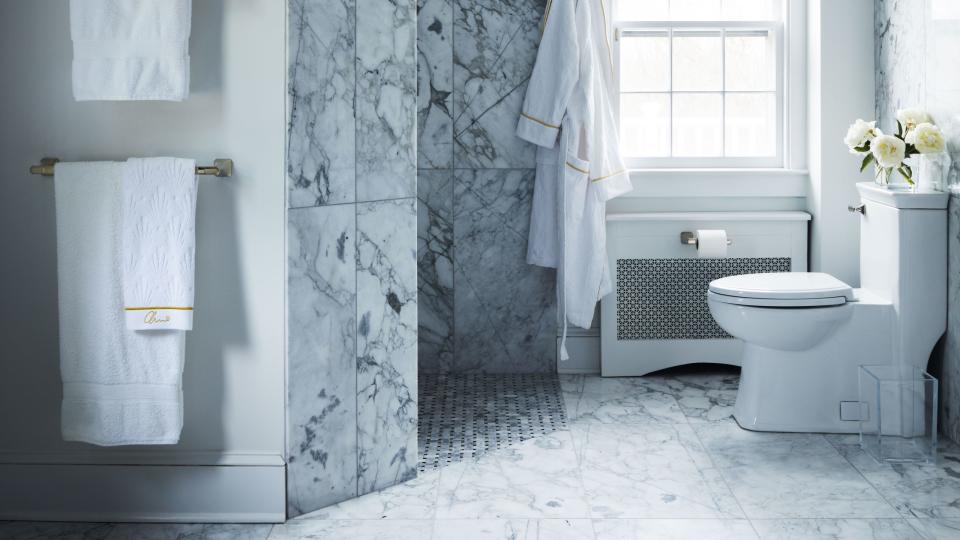
Marble, which has historically been used in the finest spaces in the world and appears to be everywhere this year in all sorts of colors and veining, is a timeless choice for architectural additions. “Whether you prefer your luxury to be quiet or loud, there’s nothing quite like marble for achieving a stunning space,” says Froelich. “Classic white marbles are timeless, but there are more colors, finishes, and coordinating pieces than ever before that enable you to create a one-of-a-kind space.”
As a natural stone, there will be a slight variation to every slab that gives it a unique look. For many, that’s part of its charm. Marble is available in a variety of finishes, Froelich explains. “A semimatte, honed finish will have a more relaxed feel, while a high-shine polished finish appears refined and sophisticated.” She advises home renovators to select a finish that works for their personality and lifestyle. A word on upkeep: As with most beautiful things, added maintenance and care is required. Froelich recommends putting a stone sealant on the surface every few years.
Travertine
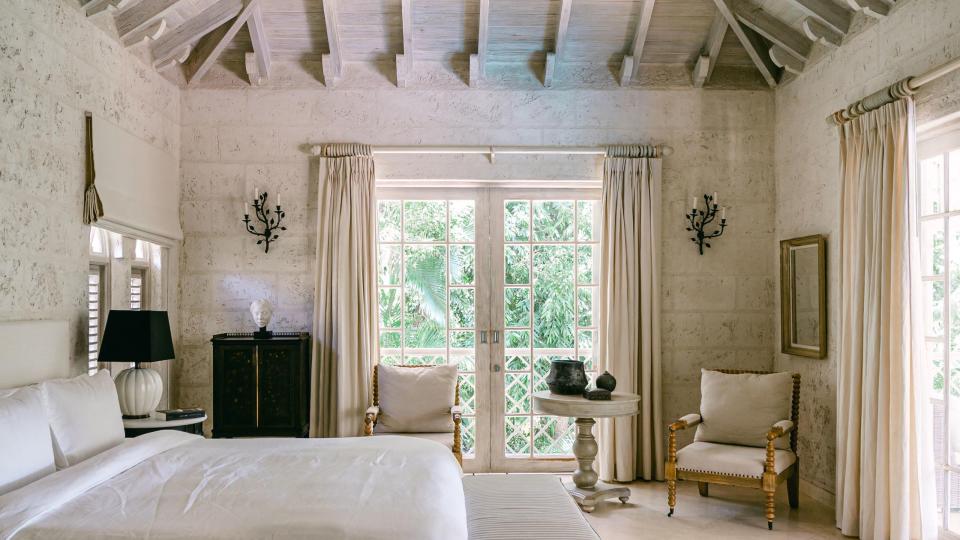
Travertine is a type of limestone characterized by its formation by mineral springs. Known for its natural colors, it’s available in a variety of shades, from warm brown to silvery gray to black. If you ask Froelich, the organic material—one of architecture’s most classic materials—is making a design comeback. “A mix of gray- and taupe-colored travertine is the most popular,” she explains, adding that it’s easy to see why. “The warm tones and soft feel make a space appear inviting and relaxing,” she adds.
As with marble, its inherent variations of natural stone are what make each piece one of a kind. “Even if they are quarried from the same location on the same day, no two pieces of natural travertine are ever the same,” Froelich says. Whether you go with a travertine tile backsplash, entryway, shower, or fireplace hearth, this stone’s timeless look and natural strength mean it will stand the test of time, literally and figuratively. Note that there is some maintenance required, and it’s recommended to seal your stone every few years.
Limestone
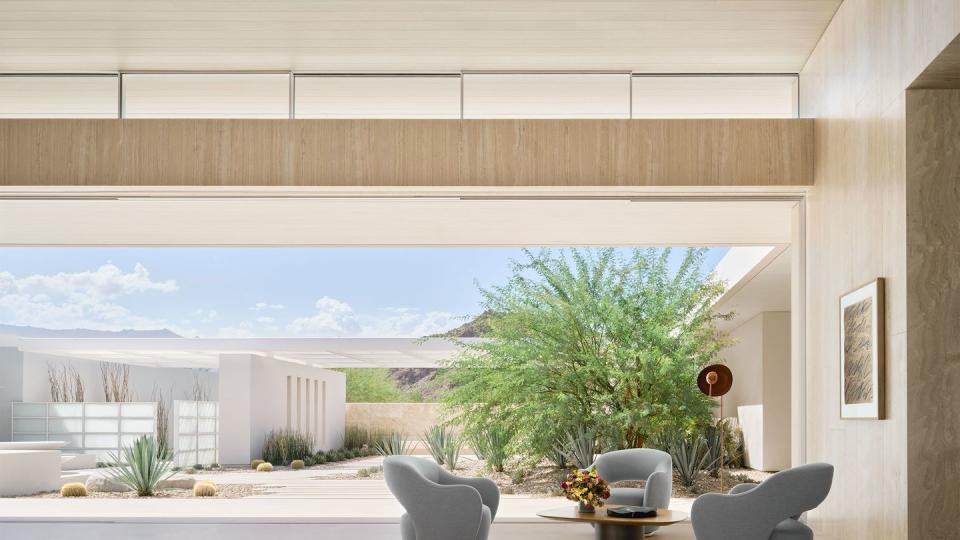
Limestone is in the same family as travertine—just older. “It’s been compressed longer in the ground than travertine,” explains Froelich. Limestone is made up of fossils, the result of the buildup of marine animal shells and skeletons. The result? “Soft patterning and beautiful hues of brown, black, beige, gray, and white that lend a welcoming appearance to any space,” Froelich says. Its neutral coloring is a versatile canvas to decorate with in a variety of design styles. With a neutral backdrop, limestone creates all-over warmth, allowing other design elements to shine without competing focal points, whether you’re adding it to your fireplace mantel, entryway flooring, kitchen, or living area. As for maintenance, limestone requires a sealant refresh every few years.
Slate
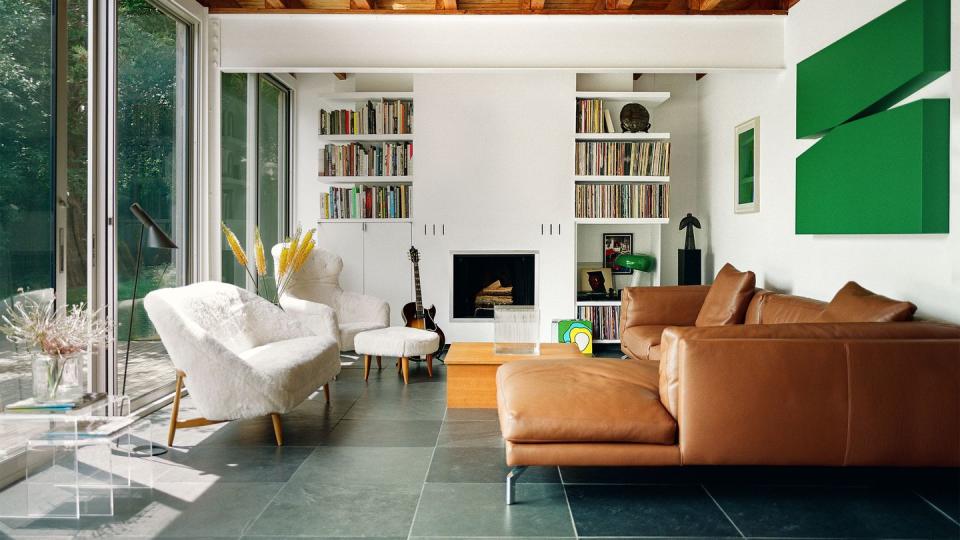
Another natural stone, slate is known for its unique color palette that ranges from black to copper, rust to blue. “Slate is a very versatile material,” Froelich shares. “It lends itself to rustic spaces but is just at home in a contemporary bathroom or kitchen.” Incorporating slate into your design scheme will bring the outdoors in, displaying various colors and movement that add interest to any wall or flooring. Slate comes in a natural finish, or can be sealed for a more “wet” look. Like all natural stone, maintenance in the form of sealing every few years is suggested.
Luxury Vinyl Tile (LVT)
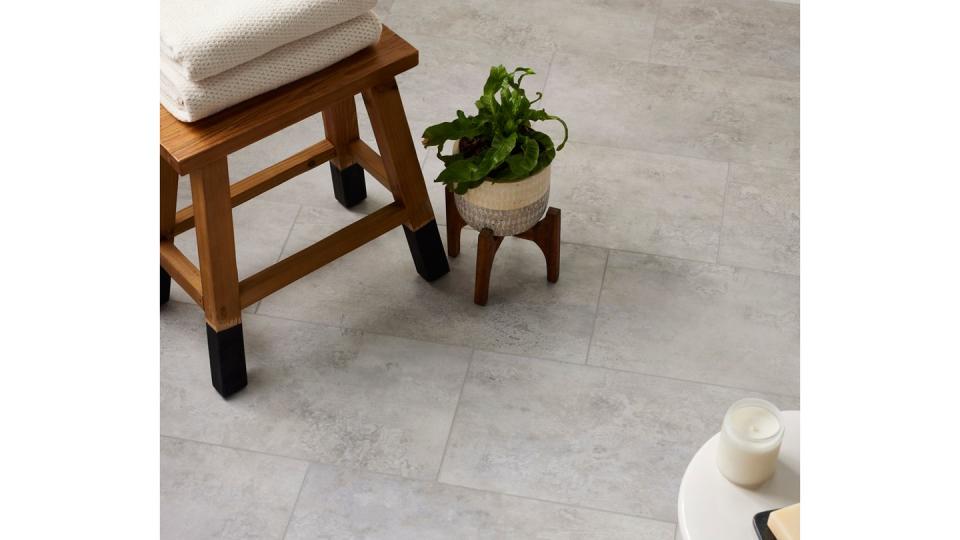
Luxury vinyl tile, or LVT, is a budget-friendly material that can be a great way to achieve an elevated design look without the inflated price. Benefits include that it’s waterproof and offers maximum utility and longevity in any space. “LVT makes for a compelling alternative to traditional flooring materials, offering the timeless appearance of natural wood and stone with unparalleled durability and hassle-free maintenance,” Froelich explains. It’s ideal for kids and pets too and is very easy to clean and maintain.
The latest flooring innovation is floating LVT, which can be installed over existing flooring through a click-and-lock system that is an effortless option for DIYers. “Luxury vinyl tile and planks are available in an array of timeless styles to ensure you can achieve durability without having to sacrifice beauty,” Froelich adds. The Tile Shop’s selection includes wood-look hues ranging from soft blond to rich chocolate brown, with realistic graining and knotting details that replicate natural wood. For more sophisticated spaces, this stone-and- marble-resembling vinyl flooring showcases both bright white and cool gray tones with vivid veining that mimics the lavishness of natural stone.
Stone Mosaic
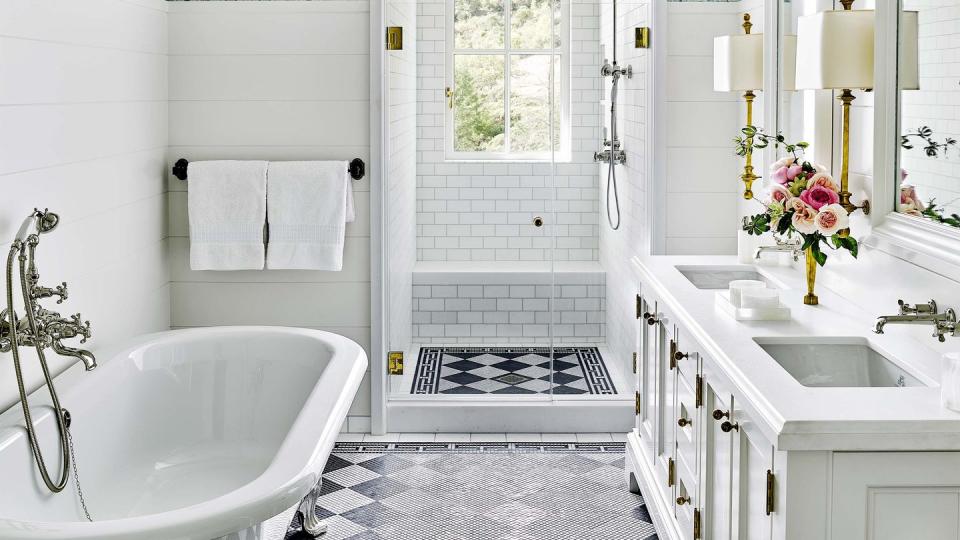
Stone mosaic tile, or natural stone that has been cut into a specific form, is an elegant decor choice that dates back to the ancient Egyptians. It can have a matte or bright finish. “This category is vital for an essential part of any luxury residence—the shower,” Marcus explains. “The natural ability of small-format mosaic, ranging from 3/8 inch to 3 inches, to perform as a nonslip floor is unbeatable.” Even better, it is cut with water-jet technology into curvilinear shapes that were once nearly impossible to achieve, making it the star of mosaics in countless luxury homes. Virtually any style of home can be enhanced with an artful stone mosaic tiled space. For those interested in this option, regular sealing maintenance is required.
Art Glass
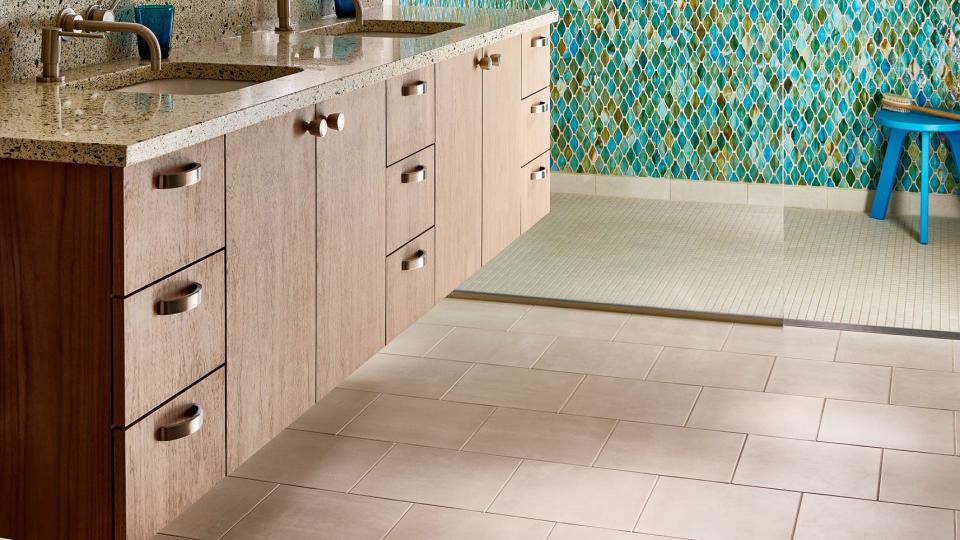
A luminous, intensely colorful medium, art glass has been embraced by designers through the centuries. “But now we see it used as radiantly lovely tile and mosaic, primarily as wallcovering, though lower-traffic floors such as those in primary baths and showers can also be outfitted with glass mosaics,” shares Marcus. “The brilliant color and gleam of these mosaics is especially ideal for backsplashes in kitchens and bars, as glass is impervious to staining and cleans so easily.”
Zellige
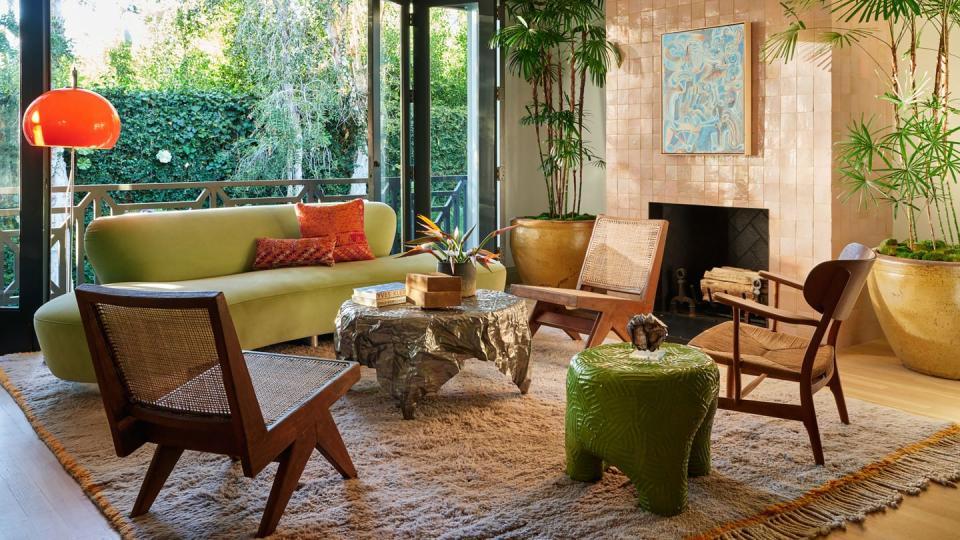
Zellige is a type of tiling that can be traced back to 10th-century Morocco, where tiles were handcrafted from a blend of local clay that was then glazed and fired. This is a product that truly embraces its heritage and sense of place, and yet is perhaps the trendiest of current ceramic offerings today, according to Deborah Osburn, founder of an artisan tile company Clé. “Zellige can be installed in a wide variety of surfaces in every room in the house,” she explains. “It lends a handcrafted vibe to more streamlined and even traditional settings and is perfectly at home in more eclectic ones.” It can even be used outdoors (often added above pool waterlines) in warmer climates. Available in both glazed and unglazed forms, it’s most notable for its glossy glazes in fun colors that can add a dash of bohemian glam to any space.
When considering bringing zellige into your home, Osburn advises hiring the right installer, someone with experience handling zellige specifically. Prior to installing the tiles, she suggests laying them out to see how they blend together.
Handcrafted Cement
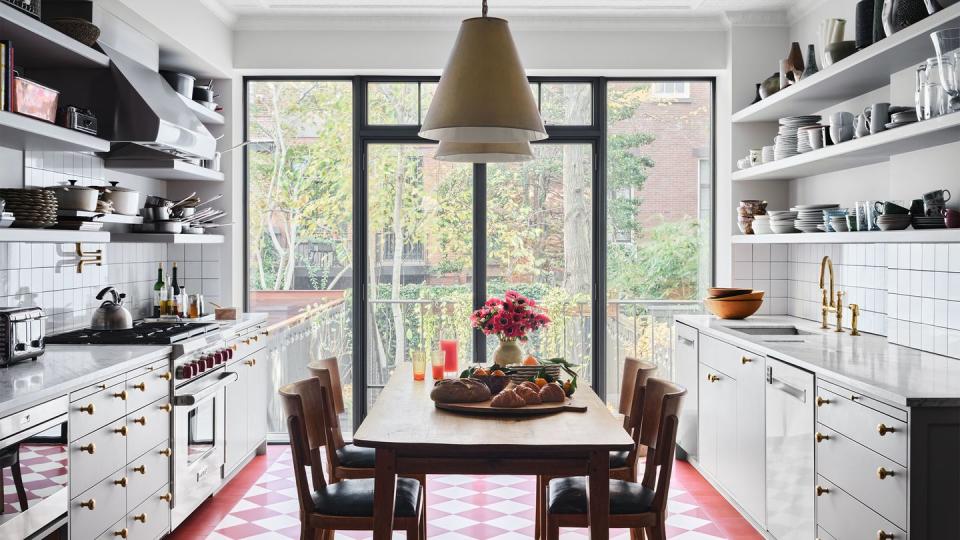
Handcrafted cement tile is sometimes known as encaustic cement, concrete, hydraulic, or Cuban tile; it is a durable, colorful material that’s traditionally been used throughout Europe. “Cement’s origins spring from the mid-1800s, when, drawing on centuries of Moorish influence, artisans in Spain developed the process for making cement tile that is more or less still used today,” Osburn explains. The tile is made by infusing fine cement powder with rich pigments, pouring the mixture by hand into a mold, then pressing it into flat tiles that are cured and hardened. “Spanish artisans were able to create a durable surface material without the need for a kiln,” Osburn adds.
This versatile end result fits into a wide range of interior styles, from classic to ultracontemporary and from minimalist to maximalist. It can even go outdoors in areas that aren’t subject to freezing temperatures. Handcrafted cement tile does require sealing and annual maintenance and will patina over time, adding additional layers and depth.
Terra-cotta
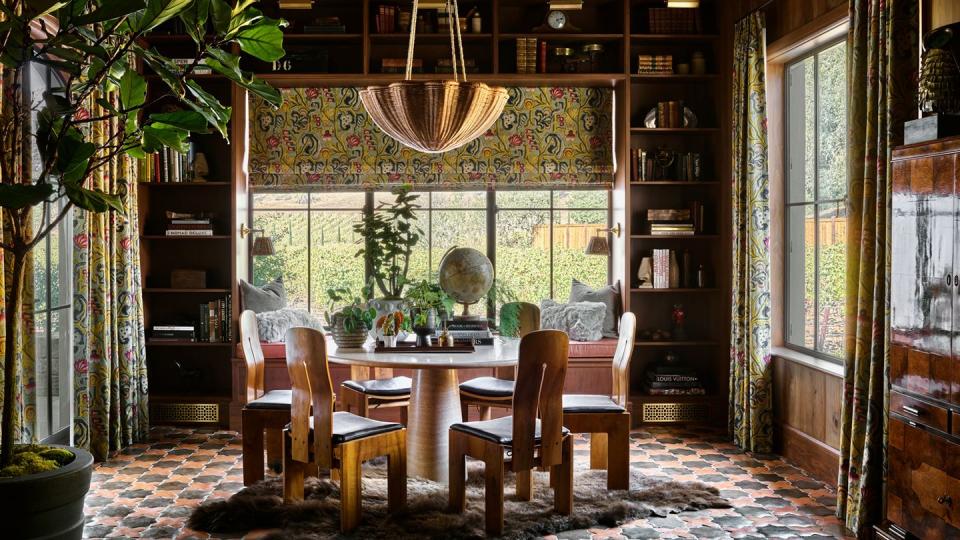
Terra-cotta is made from clay that—glazed or unglazed—is fired in a kiln. It gets its signature red hue from high iron content. “Terra-cotta is endlessly versatile and can be used in any interior aesthetic,” shares Osburn. “Terra-cotta tiles are perfect for interior walls, floors, backsplashes, kickplates, and more.” Due to its porous nature, it doesn’t hold up well in pools, steam rooms, fountains, and exterior walls, and outdoors.
You Might Also Like

